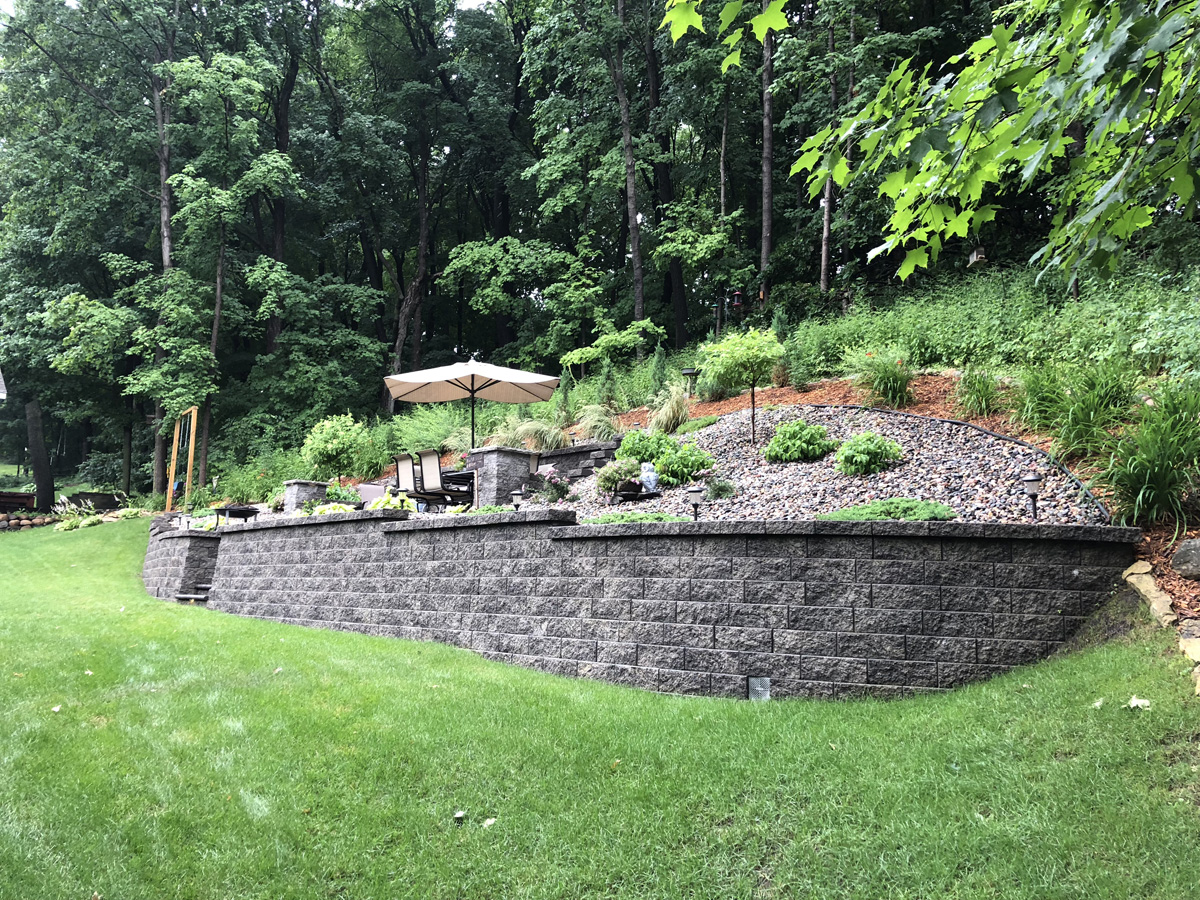Professional approaches to Steep hill landscaping for sloped yards.
Professional approaches to Steep hill landscaping for sloped yards.
Blog Article
Accomplish a Stunning Exterior Sanctuary With Thoughtful Steep Hill Landscape Design Solutions
Transforming a steep hillside right into a fascinating outside oasis presents distinct difficulties that call for ingenious landscape design solutions. By resolving problems such as erosion control and accessibility, one can develop an unified mix of charm and capability. Strategies such as terracing, the installation of maintaining walls, and the choice of native plants play critical duties in this process. In addition, incorporating water functions can further improve the landscape's appeal. Comprehending the intricacies of these components is essential for attaining a genuinely natural and inviting setting. What techniques will best fit your hillside's details features?
Comprehending Steep Hill Obstacles
Landscaping on high hillsides offers unique difficulties that need careful consideration and strategic planning. The inclination of the terrain can lead to issues such as dirt erosion, water overflow, and minimal accessibility, all of which have to be addressed to develop a practical and visually pleasing outside space.
One of the primary interest in high hill landscape design is disintegration, which can arise from hefty rainfall or improper drain. This not only impacts plant health yet can likewise threaten the security of the slope. Executing reliable disintegration control procedures, such as growing deep-rooted greenery or making use of compost, is necessary in maintaining the stability of the landscape.

Designing With Terracing Techniques
To mitigate the difficulties presented by steep hills, integrating terracing strategies can be an efficient option. This design technique changes a sloped landscape into a collection of level, degree locations, developing a visually striking and useful outdoor area. Terracing not just assists to avoid dirt disintegration yet additionally helps with better water drain, which is crucial in keeping the wellness of plants and the stability of the hillside.
When creating balconies, cautious consideration of the slope's angle and the soil kind is vital. Each terrace must be strategically put to make best use of sunlight direct exposure while lessening the danger of overflow. Making use of indigenous plants on each degree can improve biodiversity, advertise sustainability, and decrease maintenance demands. Additionally, integrating paths between terraces can improve ease of access and urge exploration of the landscape.
Terraced yards can serve several purposes, including veggie production, decorative screens, or outdoor seating locations. By using products that blend harmoniously with the surrounding atmosphere, the terracing can boost the total visual appeal of the home. Eventually, thoughtful terracing transforms high hills into functional, attractive areas that welcome communication and enjoyment.
Implementing Keeping Walls
When encountered with the difficulties of high terrain, carrying out keeping wall surfaces can provide both architectural assistance and visual improvement to a landscape. These walls serve to stop soil erosion, stabilize slopes, and develop level areas for horticulture or entertainment usage. Steep hill landscaping. By successfully handling find out water runoff and reducing dirt activity, preserving wall surfaces secure your landscape financial investment while boosting security
Professional installment is essential to make sure the long life and effectiveness of retaining wall surfaces. Proper drain systems have to be integrated to soothe hydrostatic pressure, preventing architectural failing. Consulting with landscape professionals will certainly ensure that the style aligns with your total vision while sticking to regional policies.
Choosing Native Plants
Choosing native plants for your landscape style provides various environmental and visual benefits. Steep hill landscaping. Native plants are adjusted to the regional climate and soil problems, needing less water and upkeep contrasted to non-native types. This adaptability Read Full Article not just saves resources but also advertises a healthier community, as native plants support regional wildlife, including pollinators such as bees and butterflies
Including indigenous vegetation into your steep hillside landscaping can improve dirt stability, lowering disintegration and advertising a balanced ecological community. Deep-rooted indigenous plants help anchor the dirt, making them optimal for sloped areas. These plants often display lively colors and varied textures, developing a visually attractive landscape that harmonizes with the surrounding environment.
When picking native plants, consider their development habits, seasonal interest, and compatibility with other species. Organizing plants with comparable water and sunlight requirements can lead to a much more cohesive layout, while also streamlining maintenance. By choosing indigenous plants, you not just cultivate a lasting outdoor sanctuary yet likewise add favorably to the local biodiversity, making sure that your landscape flourishes for years to find.
Incorporating Water Features
Integrating water attributes into your high hillside landscaping can substantially improve both the aesthetic charm and ecological functionality of the space. The sound of moving water creates a calm environment, while visually, it can work as a centerpiece that draws the eye and includes deepness to the landscape.
When selecting water functions, take into consideration alternatives that complement the all-natural shapes of your hillside. Waterfalls, for example, can cascade down the incline, creating aesthetic interest and promoting healthy drainage. Fish ponds can additionally be incorporated into the layout, encouraging neighborhood wildlife and giving environments for numerous varieties.
Furthermore, the positioning of plants around these functions is crucial. Indigenous aquatic plants not only improve the beauty of the water function but likewise add to its ecological equilibrium by filtering system contaminants and giving food for regional fauna.
Upkeep is one more crucial variable; make sure that your water function is developed for very easy upkeep. A correctly built function will call for very little intervention, allowing you to enjoy the charm and harmony it offers without extreme labor. Eventually, attentively bundled water features can change your high hill landscape right into an exciting outdoor sanctuary.
Final Thought
In conclusion, changing a high hill into a lovely exterior sanctuary requires thoughtful landscape design description approaches that address disintegration control and accessibility. The combination of terracing techniques, the execution of maintaining wall surfaces, and the option of native plants are vital elements of reliable layout.
Report this page